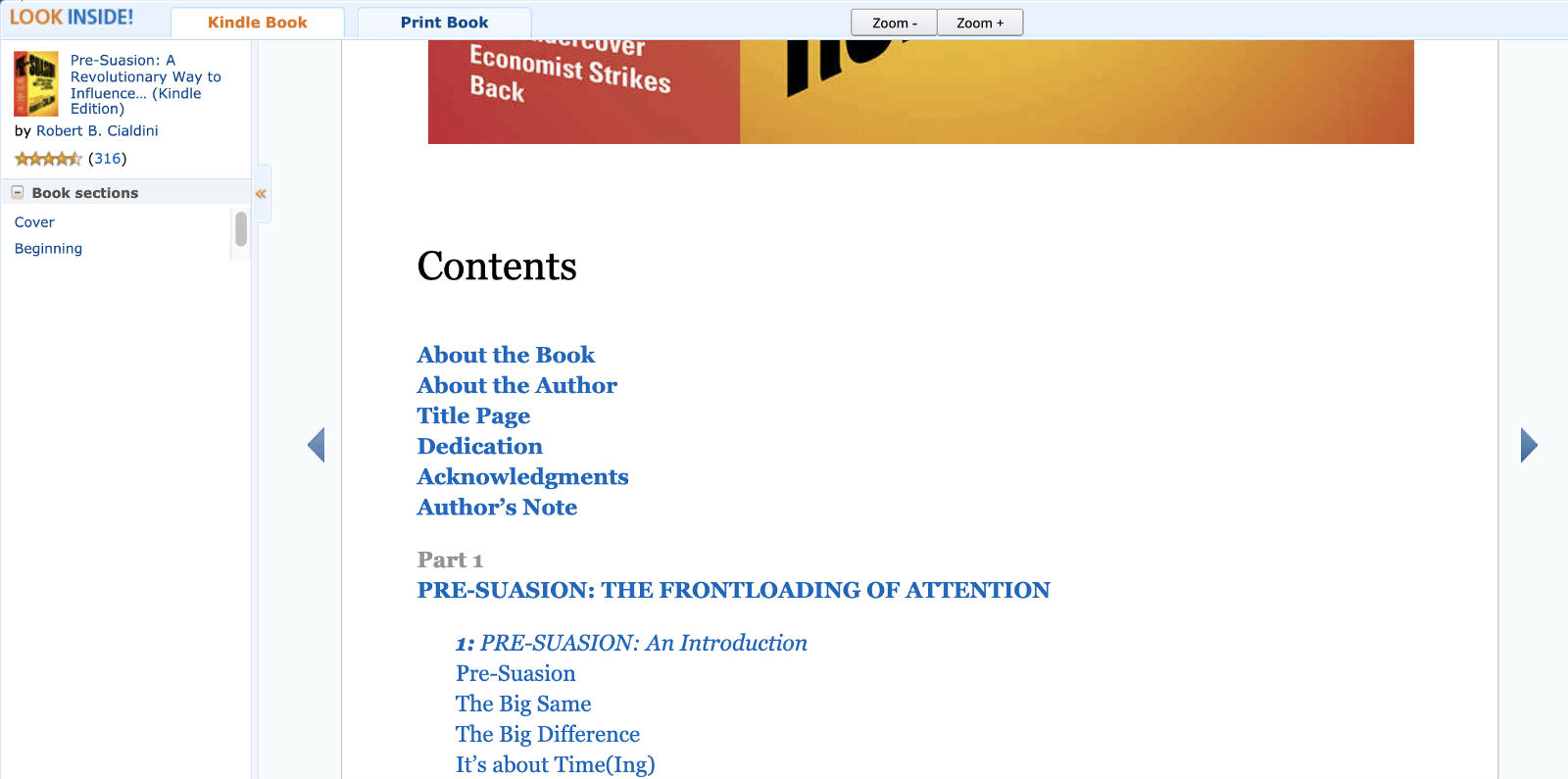Did you know, that if you want someone to do you a favor often the best way to get it is by doing something for them first? Once they’ve seen you give them a gift or perform an act of kindness toward them, they’re more likely to do you one in return.
Having ulterior motives for doing favors isn’t exactly ethical, but it does work. Why is that? It’s down to a psychological persuasion principle known as reciprocity.
What is Reciprocity?
Reciprocity is the social norm of responding to a positive action with another positive action. It’s why you feel indebted when someone does you a favor.
Made famous by Robert Cialdini in his book “Influence: The Psychology of Persuasion,” Reciprocity can be summed by the saying, “You‘ve got to give to get.” For example, in one of Cialdini’s studies, customers were 42% more likely to make a purchase if they got a free piece of chocolate when entering a store.
(And if you want to learn more check out my article about another of Cialdini's persuasion principles, Social Proof.)
A Real-World Example of Reciprocity
A famous example of reciprocity in action is the Hare Krishnas and their free flowers. After coming to the United States in the 1970s to grow their religious sect, the Hare Krishnas faced an issue. They needed donations to operate, but were unsuccessful in their attempts. Frustrated, the sect tried a new tactic — reciprocity.

Photo by Martin Krchnacek on Unsplash
The Hare Krishnas began giving out books, religious texts, and flowers to each passerby. After they started giving out free gifts, the group found that donations suddenly skyrocketed.
Why? Because reciprocity was at work. Now, instead of just ignoring the Hare Krishnas, people felt the need to return the free gift in kind, in the form of a monetary donation.
How Brands Apply Reciprocity
1. Amazon: Sneak-Peeks
One way Amazon applies reciprocity to drive sales is in its Kindle store. Customers can get a peek at a potential purchase’s contents using the “Look Inside!” feature.

Source: Amazon.com
Because Amazon (and its authors) have essentially given you a free gift by letting you read part of the book, you feel indebted. Now you’re more likely to purchase this item because you want to return the favor.
2. Warby Parker: Free Samples
American eyeglasses brand Warby Parker was one of the first to operate with a direct-to-consumer model. An important component of their experience was allowing customers to order five frames to try-on at home.

Source: Warby Parker
In a category that, at the time, was fairly new to eCommerce, free trials allowed Warby Parker to overcome one of their biggest customer pain points — “What if I pay for these glasses and they don’t look good when I finally get them on my face?”
🚀 Learn what makes buyers tick
Join 8k+ of world's best marketers from brands like Disney, Coca-Cola, Google who are learning marketing psychology in <5 mins a week.
3. Duolingo: Freemium
Another form of reciprocity in action is the freemium model, where customers can use a free, but limited, version of a product and can pay for the “full” version. Duolingo, a language learning app, uses this model to perfection.
Duolingo’s Basic plan acts as a type of free sample for its users, who can then choose to upgrade if they want extra convenience features such as an add-free experience.

Source: Duolingo
4. Netflix: A Hint of Content
Netflix asked their customer base, “ What one thing would you like to know more about before signing up for Netflix”? The most popular answer (46% of responses) was “knowing all of the movies and TV shows available.”
In response, Netflix experimented with showing customers available content on the home page. But their experiment revealed something interesting. Showing customers too much of the content was distracting. Many of them browsed but never signed up.
Failed Experiment: Let customers browse Netflix’s complete catalog

Source: Netflix via awwwards. on YouTube
So Netflix redesigned their experiment. Designers still used the Reciprocity Principle, but this time they used an image that hinted at an extensive catalog. But they didn’t let customers browse the whole thing.
Giving people a sneak peek — but not the total view — made customers more likely to sign up for a free streaming trial.
Winning Experiment: Give customers a sneak peek of the content

Source: Netflix via NirandFar.com
5. Costco: Free Samples
Have you ever visited a Costco Warehouse? If so, you’re probably familiar with their free samples. And if you’re not, and there’s a Costco nearby, I recommend you check them out. Customers love Costco’s free samples, so much so that the brand is inseparably linked to their samples policy.
These sample booths are dotted all over Costco. But why do these stores give up so many square feet to free sample booths when that space could be used to sell products instead?
It’s because companies know that reciprocity in the form of sampling can drive a host of benefits — from creating new customer habits to driving sales. A study of grocery store samples showed they drove product sales by as much as 2,000%.
The Bottom Line
Reciprocity can be a powerful persuasion tool when ethically applied to customer experiences. To consider how you might apply reciprocity, ask yourself:
- What form of reciprocity would be a good fit for our brand? Free samples, trials, sneak peeks, or freemium?
- What moments are the best fit for an act of reciprocity? What behavior are we trying to drive?
- Who is the perfect audience for our reciprocity tactic? How many customers or users can we afford to share these with?
